SAN DIEGO SEO SERVICES
As the most trusted San Diego SEO experts and accredited Bing and Google partner, we know the fastest way to get your business to the first page of search engines. We use only the most efficient SEO services for small businesses. This means no black hat techniques and no risky seo tactics. Experts of OrganicSoft follow the latest SEO trends to drive relevant traffic and conversions to your business.
SEO FREQUENTLY ASKED QUESTIONS
- What is SEO?
- How Does SEO Work?
- How to Do SEO?
- What is SEO Writing?
- What is On-Page SEO?
- What is Local SEO?
- How to Track SEO Rankings?
- SEO vs. PPC?
- How Much Does SEO Cost?
- Why is SEO Important?
SEO refers to a process of enhancing your website to improve its visibility on SERP (Search Engine Results Pages) and boost the quality and quantity of traffic it generates. The better visibility your web page has in search results, the higher the chances to attract more attention of your potential customers.
What does SEO stand for?
SEO stands for “Search Engine Optimization.”
Search engines like Google or Bing use bots to crawl web pages. It means that they go from site to site to collect information about those pages and put them in an index. Once they’re in the index, special algorithms are used to determine the order they should appear in SERP for a particular query.
What are SEO ranking factors?
According to SEO experts, search ranking factors are closely related to the user experience. That said, the pages that provide the user with valuable and compelling content are more likely to get better rankings, but this is not how the story ends.
In addition to content quality, relevancy, authority, keywords, mobile-friendliness (responsive web design), link building, and loading speed, Google has over 200 ranking factors in its algorithm.
There is no one way of doing SEO. It is not possible to know over 200 ranking factors provided by the Google algorithm, but we should take advantage of what we know and use it as our secret weapon.
Let’s start with the fact that Google ranks web pages and not websites. What does that mean? Even if your business makes printer paper, not all the pages within your site should rank for “quality printer paper.” You can rank for other relevant keywords and encompass different topics that could help you rank higher.
Crawlability
Crawlability is the first step in your SEO journey. Search engines use bots, known as spiders, to crawl web pages and read their content. That way, a bot will know what the page is about, which allows it to index it later. Not all web pages get to be indexed. If Google sees that you can offer something new to users, its bots will give your page the opportunity to rank.
Responsive web design
The majority of traffic comes from mobile devices, which is why mobile-friendliness is one of Google’s principal ranking factors. Keep in mind that Google uses the mobile versions of your web page for indexing and ranking, so make sure it works well on all screen types and sizes.
Loading speed
Pagespeed, or loading speed, determines how fast your page loads. And it is another vital ranking factor on both desktop and mobile. Pages that take too long to load often result in user dissatisfaction, which affects the rankings. You can use Google’s Pagespeed Insights tool to check the speed of your web pages.
Security
Don’t underestimate the security factor. Google prefers HTTPS to HTTP, meaning that the first category is more likely to rank than the latter, which doesn’t have a security certificate. HTTPS uses encryption to secure the communication between a client and the server, creating a safe environment for logging, paying, and leaving any data on the site.
Keyword research
Keywords are the crown of a good SEO because they tell the bots what the web page is about. There are many keyword research tools you can use to find phrases relevant to your business. However, you shouldn’t forget about search intent, which should be in line with your keyword choice.
Backlinks
In SEO terms, backlinks also mean votes. And pages with more votes tend to have a higher authority and, therefore, higher rankings. It may be pretty challenging to build backlinks, but there are many useful strategies and techniques to increase your site’s authority and make it look trustworthy from Google’s point of view.
Content quality
The most reliable and valuable results often have the highest rankings. You can use a myriad of techniques to improve your SEO writing and deliver better-quality texts to attract Google’s attention. Some of them include:
- Using easy-to-read sentences
- Link to useful and relevant resources whenever you can
- Break text up with images, banners, quotes, and other elements to make it more readable.
- Write fresh content.
The essence of quality SEO writing lies in the implementation of keywords and relevant phrases within web content. The best way to write for SEO like a pro is to mix high-quality copy with targeted search terms. That way, you can achieve long-lasting and organic visibility on SERP.
On-page SEO includes optimizing individual web pages to rank higher and generate more relevant traffic in search engines. On-page SEO practice boasts both the content and the page’s HTML source code, which is not the case with off-page SEO, which involves links and external elements. The most common on-page SEO practices include:
- Optimizing title tags
- Writing quality SEO content
- Implementing internal links
- Creating URLs
- Optimizing every aspect on your web page, not off it.
Local SEO is the essence of every business with a physical location to meet customers or serve in a particular geographic area. Local stores such as restaurants, law offices, laundromats, grocery stores, hairdressers, and similar brick-and-mortar stores can and should take advantage of local SEO.
The aim of local SEO is to help businesses appear on Maps or search results when someone types in ‘best online marketing San Diego’ or ‘ seo company near me.’ As a business owner, you should keep in mind three things – your core term, keyword modifier, and location.
When it comes to local SEO, it’s better to make your keywords longer. Long-tail keywords tend to increase click-through rate (CTR) and make your strategy more diverse and fruitful. You may consider related searches to get some ideas and enhance your keyword strategy.
It can help you implement the core local keywords, increasing your chances to rank in local search. The better your local SEO practices are, the higher are chances to attract more consumers.
If you can keep track of your rankings, you can use different strategies to improve them. There are many tools you can use to measure SEO rankings, and most of them can provide valuable insights into your page’s:
- Organic traffic
- Keyword rankings
- Bounce rate
- Scroll depth
- Conversion rate
- Time users spend on your page.
- Google Rank Checker
- Ahrefs
- SEMrush
- Google Search Console
- SERP’s Keyword Rank Checker.
SEO is about optimizing a web page and making it more relevant to users organically, without paying for it. Search listings are free, and Google won’t allow you to pay for better rankings but check if you deliver valuable and trustworthy content.
PPC (pay-per-click) is the form of paid online ads that appear above relevant searches and other web content. Google Ads campaign doesn’t help you with your SEO rankings but fosters the connection with a broader audience across the online community.
Both approaches are packed with benefits, and you may choose one based on your goals and results you want to achieve. While SEO may bring more long-standing results and help you build site authority, Google Ads are more flexible and suitable for any business size.
The truth is that most business owners don’t know how SEO works, and therefore are clueless about its price. You may find yourself ambushed by SEO spammers that guarantee first-page results for only $99 a month. Nobody can guarantee first spot in search engine results. Keep that in mind.
Stay away from cheap SEO and agencies that guarantee success over night. Their approaches can only make it worse, getting your site punished by Google. When looking for a quality SEO agency, ask for their portfolios, read other clients’ reviews, and make sure their services meet your budget. OrganicSoft offers Startr plan for $500. Plan is tailored for small, local businesses.
Good SEO practices are essential for various reasons. In addition to helping you establish a long-standing digital presence, they can help you attract more customers and take your local business to the next level.
Keep in mind that SEO is a long-term and ongoing process that requires time and effort. That said, don’t expect the results to come overnight. But once they arrive, you can continue running your business with an extra dose of confidence.






